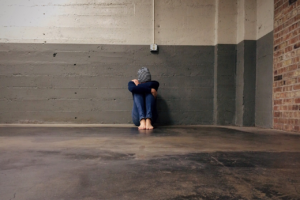- Calls to this hotline are currently being directed to Within Health or Eating Disorder Solutions
- Representatives are standing by 24/7 to help answer your questions
- All calls are confidential and HIPAA compliant
- There is no obligation or cost to call
- Eating Disorder Hope does not receive any commissions or fees dependent upon which provider you select
- Additional treatment providers are located on our directory or samhsa.gov
Can Borderline Personality Disorder Cause an Eating Disorder?

Contributor: Melissa O’Neill, LCSW, Director of Clinical Operations at Timberline Knolls Residential Treatment Center
Decades of research have revealed a connection between eating disorder (EDs) and Borderline Personality Disorder (BPD) — EDs are far more prevalent in those struggling with BPD: 53.8%, as opposed to the nationwide average of approximately 6%.
Most people have a basic understanding of what an ED is; the same does not hold true for BPD. Therefore, in order to determine which is the chicken and which is the egg, we need to understand this other disorder more fully.
BPD is defined by extreme instability in one’s relationships and emotions. Radical mood swings are the norm and often tied to a sense of rejection or betrayal from others, either real or imagined. Healthy boundaries in a relationship are often interpreted as rejection or criticism. Self-injury is not uncommon, and there is a strong tendency toward suicide.
This disorder is far more common in females than males. This may be due to the fact that females are more likely to be both genetically predisposed and socialized to act out relationally. Therefore, instability in relationships may impact their overall emotional experience more intensely than in males.
Although not empirically proven, it is widely believed that this disorder is rooted in childhood trauma, be it parental neglect from both mother and father, or a traumatic early childhood event. Both can cause disruption of the emotional centers of the brain.
Yet, because normal emotional development can mimic the classic symptoms of BPD, this condition is not diagnosed until adulthood, usually the early 20s. In fact, it is suggested that a diagnosis of BPD should never be entertained in a child or adolescent. This is because childhood tantrums or adolescent histrionics are fairly normal behaviors. Now, when rapid mood shifts or extreme instability in relationships continue in adulthood, BPD needs to be considered.
A female with this disorder can be her worst enemy. Usually what she wants is a profoundly close relationship with a friend, family member or partner, but her relentless pursuit of acceptance and erratic moods result in the exact opposite.
A young woman I treated illustrated this point quite well. “Katie” entered our treatment program at the age of 22. Diffident by nature, yet driven by the need for attachment, she would idealize others from afar.
Like a shy kitten, she would approach slowly and carefully — this is when the disorder became apparent. Unless the other individual immediately offered unconditional acceptance and demonstrated 100% commitment to the relationship, Katie would be gravely wounded, emotionally destroyed. Even if the other person said: “I have group now, but we can talk afterward,” Katie felt only wholesale rejection.
Individuals like Katie with BPD suffer from these painful emotions often on a daily basis. Not surprisingly, they want to escape the pain. This is where an ED can enter the picture and provide the desired relief. Food is a relationship that begins at a very young age and can easily become a candidate for manipulation as a method to cope.
Restricting food in the midst of despair can result in the unpleasant feelings that hunger brings to all of us, and thus, diminish other negative emotions. In Katie’s situation, she would not eat after perceiving rejection. Primarily, we viewed this as a punitive act.
Individuals not yet in treatment may restrict for the initial benefits and continue for the long-term rewards. These patterns are often immediately effective in regulating emotions and can then be difficult to challenge as they progress.
As family and friends grow increasingly worried, they may intervene in an intrusive, unwanted fashion. Often after efforts fail, they will withdraw. This withdrawal is viewed as yet another rejection, and negative emotions escalate within the person.
Whether anorexia or binge eating disorder, the ED provides stability and structure. Seemingly coming to the person’s rescue multiple times per day, it can imitate the feeling of identity or sense of self that has been missing.
Bulimia, another food-related disorder, also serves as an effective way to mitigate painful feelings at the moment. While focused on consuming food, the hurt recedes; then the commensurate act of purging triggers an endorphin release from the brain, which helps provide a sense of peace and internal calm.

Although not food-based, fluid restriction is also often used to decrease severe emotional turmoil. In only a handful of hours, dehydration causes the person to feel dizzy and less connected to their feelings, which is precisely what they want.
In the chicken/egg construct, BPD is definitely the former, while the ED is the latter. Due to the genesis and manifestation of BPD, it’s reasonably clear that it would present first, while an ED would come on board secondarily to alleviate the symptoms.
This is precisely why when an individual seeks treatment for an ED, and it’s important to consider another diagnosis such as BPD. We can’t expect to successfully take away someone’s way of coping, as dangerous as it may be, without addressing what lies beneath.
About the Sponsor:
Timberline Knolls Residential Treatment Center is a private, female-only eating disorder treatment facility located just outside of Chicago, Illinois.
About the Author:

Melissa O’Neill’s role involves collaborating with others to create the vision and curriculum for all group programming offered at Timberline Knolls. She also clinically supervises the talented specialists who facilitate groups all over campus. Early in her career, Melissa spent time in residential care, working with children with significant trauma histories. She then ran a substance abuse IOP, followed by several years in private practice. She also managed an IOP/PHP program for Eating Disorders and Mood Disorders.
The opinions and views of our guest contributors are shared to provide a broad perspective of eating disorders. These are not necessarily the views of Eating Disorder Hope but an effort to offer a discussion of various issues by different concerned individuals.
We at Eating Disorder Hope understand that eating disorders result from a combination of environmental and genetic factors. If you or a loved one are suffering from an eating disorder, please know that there is hope for you, and seek immediate professional help.
Published on January 16, 2019.
Reviewed & Approved on April 12, 2024, by Baxter Ekern, MBA
Published on EatingDisorderHope.com

